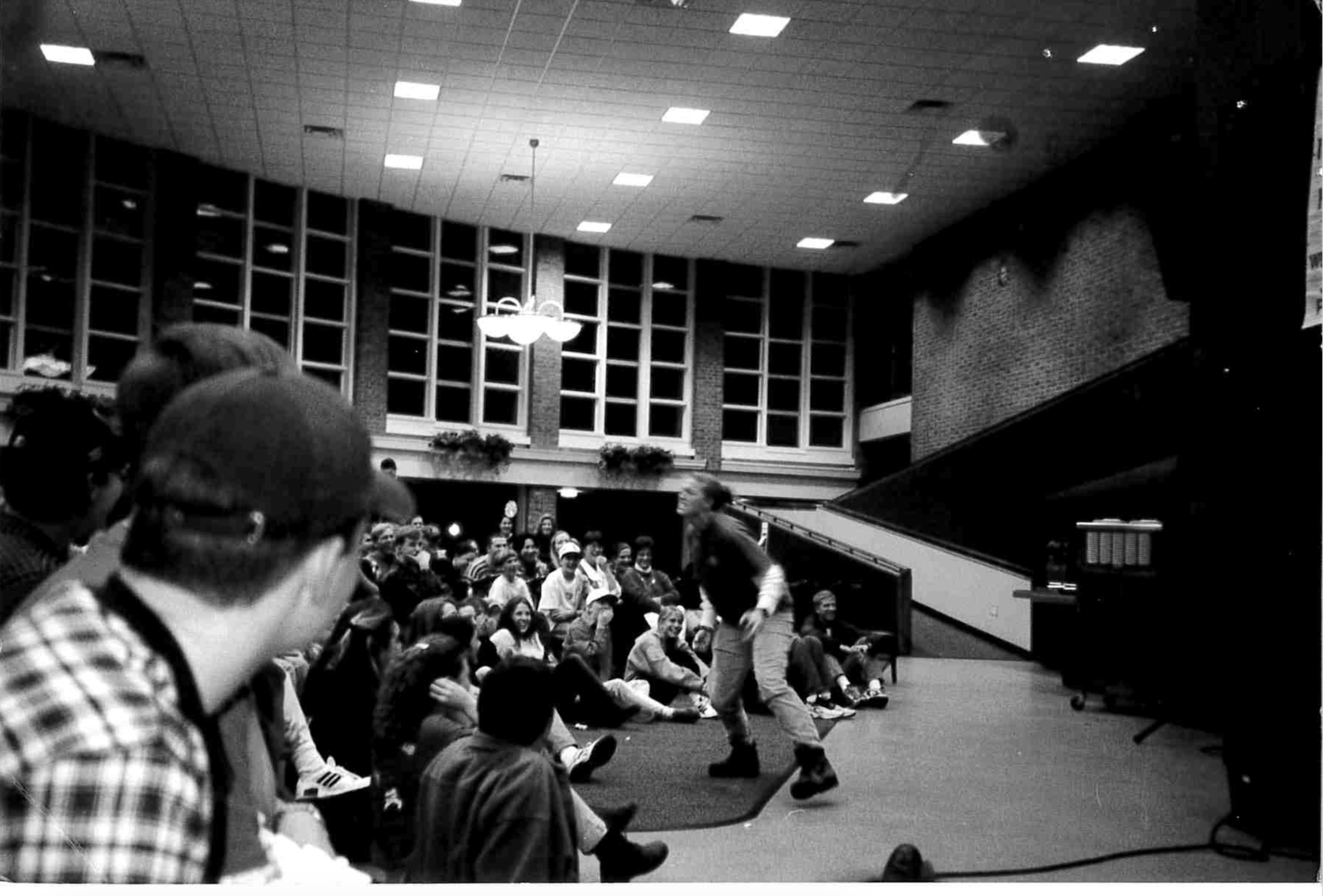The Royal Flush
Upcoming events
NAACP Founder's Day Drop In
Tuesday at 9:30 PM – Hill Courtyard, TroneEconomics of Violence (CLP)
Tuesday at 11:30 PM – Riley Hall 106The Story of Gospel Music (CLP)
Wednesday at 12:00 AM – Johns Hall 101What's in a Name? (CLP)
Thursday at 10:00 PM – Hartness PavillionRacial Inequity (CLP)
Thursday at 10:00 PM – Furman Hall 214Milk & Cookies Fundraiser
Thursday at 11:00 PM – Thomas Room, TronePizza Sale/Fundraiser (Sidewall Pizza)
Friday at 5:00 PM – Joseph Vaughn PlazaWinter Car Wash
Friday at 8:00 PM – Front of McAllister AuditoriumJason Palmer with the Furman Jazz Ensemble
Saturday at 1:00 AM – Daniel Recital HallSouth Carolina State Powerlifting Championship
Saturday at 2:00 PM – Physical Activities CenterRLC Super Bowl Pizza and Wings Giveaway (Sign up on SyncDIN)
Sunday at 10:00 PM – Thomas Room, TroneGuest Artist Recital: Andrea Cheeseman, clarinet
Tuesday at 1:00 AM – Daniel Recital HallYOUR ADVERTISEMENT HERE
We Don't Play Like We Used To

Perusing old yearbooks and photobooks gives rise to plenty of thoughts and emotions, especially pages from the 70s, 80s, and 90s — decades we college students like to romanticize. The style, the hair, the music: these three decades offer a breadth of consumer trends and cultural explorations we still find interest in today. Beyond their distinctive aesthetic, though, looking at photos of our community’s past reveals what our parents’ generation cared enough about to photograph and slap onto their yearbook spreads.
With the Duke Library and FUSAB’s help, I recently scavenged through Furman books and records from the 70s to 90s to do some anthropological investigation. In studying these sources, I quickly noticed trends, such as the lack of racial representation in photography, the prevalence of Greek activity, and an emphasis on recreational over academic activity. I spent hours staring at what past generations wanted us to remember, and I learned about what they held close (and I recommend everyone spend some time looking at these files in Archives).
I became particularly interested in how students in the past used so many spaces on campus, which today we use for different purposes, to have fun. Before 21st century renovations, the Dining Hall had an open floor plan with no upstairs seating or Mongolian grill. This layout allowed students to sit in larger groups (at larger tables) and see the entire Dining Hall. The DH also operated as a cultural center, with a performance stage where the dish pit currently stands. Records show night gatherings and CLP performances in the space which is now used solely for dining.
Personally, I would have loved to have a multipurpose communal space like this, where students spent more time in leisure. Although modern students use the Dining Hall to socialize and exercise friendship, I wonder if past students felt more present and embodied in the space. Was the dining hall reconstructed to accommodate more students, or to encourage quicker eating habits, thereby discouraging quality time with our community and extended relaxation? Either way, institutional restructuring of a social space impacted the way we socialize.
The most obvious example of administrative influence on socialization is the Furman Lake, which was more accessible in the 70s through 90s and functioned as a playground of sorts. Photographs show new students participating in orientation activities on rafts, people lounging on a sand beach, families boating on parents' weekend, and even a sailing team with their vessel on the water. Surrounding the lake, natural fields (now buried by cement car lots which cause runoff) provided space for music, and dance, and sports recreation.
Now, a canoer on the lake risks disease or police intervention; most lake side areas are filled with student and staff vehicles; and an embodied experience with the lake most likely means a walk or jog on the path. While the institution of rules and new construction mostly prioritizes student safety and well-being, these changes over time in what were once recreational spaces brings to question how much our social well-being is valued by our administration.
Students today do not seem to fill recreational spaces in the same way Generation-X did, which is possibly for the worse. Thus, it’s important for Furman Administration to recognize that construction projects and policy changes directly impact social opportunities, especially for new students. Do facilities and administration seek to preserve the land we roam on? Why should profitability and efficiency of campus buildings and land take precedent so often over student access to recreation and leisure? And might the lake ever become a swimmable body of water again?
I challenge Furman to consider the social well-being of current students, and how we want to take up space. We are told to stay busy, and we do. However, oftentimes this busy culture infiltrates our material culture, buildings, and land use. Perhaps potential new students might want to see more picnickers, musicians, and sailors around the lake and more communal lounging in the dining hall while on their tours; having students at ease reflects well on Furman during tours and ensures current students are also enjoying their college experience — which is a win-win for both Furman and students alike.
My challenge to current students is this: let's more often fill the spaces we now have with non-academic activity. I'm guilty of complacency, as are many of us under academic and personal pressure. But I challenge us this spring to bond more in our physical spaces with the people we love!